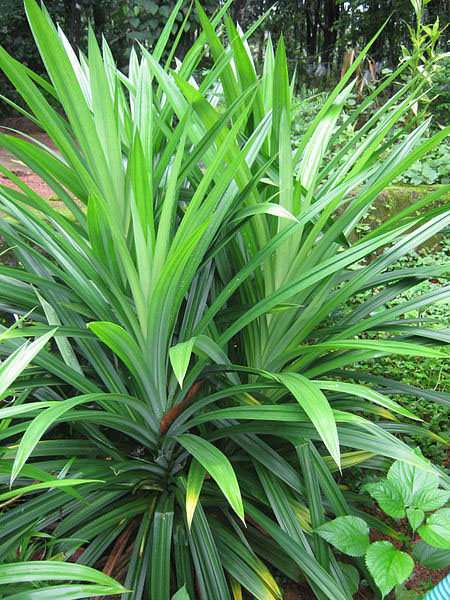Authentic Thai Recipe Ingredient: Pandan leaves


Pandan leaves
ใบเดย (Bai toei)
This sweet smelling leaf of the Pandan, or Bai Toei, is used in various sweet snacks, and also in the well known dish Kai ho bai toei, deep fried chicken wrapped in pandanus leaves, and to stuff the belly of barbecued fish.
Pandanus amaryllifolius is a tropical plant in the Pandanus (screwpine) genus, which is known commonly as pandan leaves and is used widely in Southeast Asian cooking as a flavoring. The plant is rare in the wild, but is widely cultivated. It is an upright, green plant with fan-shaped sprays of long, narrow, bladelike leaves and woody aerial roots. The plant is sterile, flowers only very rarely, and is propagated by cuttings.
The leaves are used either fresh or dried, and are commercially available in frozen form in Asian grocery stores in nations where the plant does not grow. They have a nutty, botanical fragrance which enhances the flavor of Thai foods, especially rice dishes and cakes.
The leaves are sometimes steeped in coconut milk, which is then added to the dish. They may be tied in a bunch and cooked with the food. They may also be woven into a basket which is used as a pot for cooking rice.
Pandanus amaryllifolius is a tropical plant in the Pandanus (screwpine) genus, which is known commonly as pandan leaves and is used widely in Southeast Asian cooking as a flavoring. The plant is rare in the wild, but is widely cultivated. It is an upright, green plant with fan-shaped sprays of long, narrow, bladelike leaves and woody aerial roots. The plant is sterile, flowers only very rarely, and is propagated by cuttings.
The leaves are used either fresh or dried, and are commercially available in frozen form in Asian grocery stores in nations where the plant does not grow. They have a nutty, botanical fragrance which enhances the flavor of Thai foods, especially rice dishes and cakes.
The leaves are sometimes steeped in coconut milk, which is then added to the dish. They may be tied in a bunch and cooked with the food. They may also be woven into a basket which is used as a pot for cooking rice.